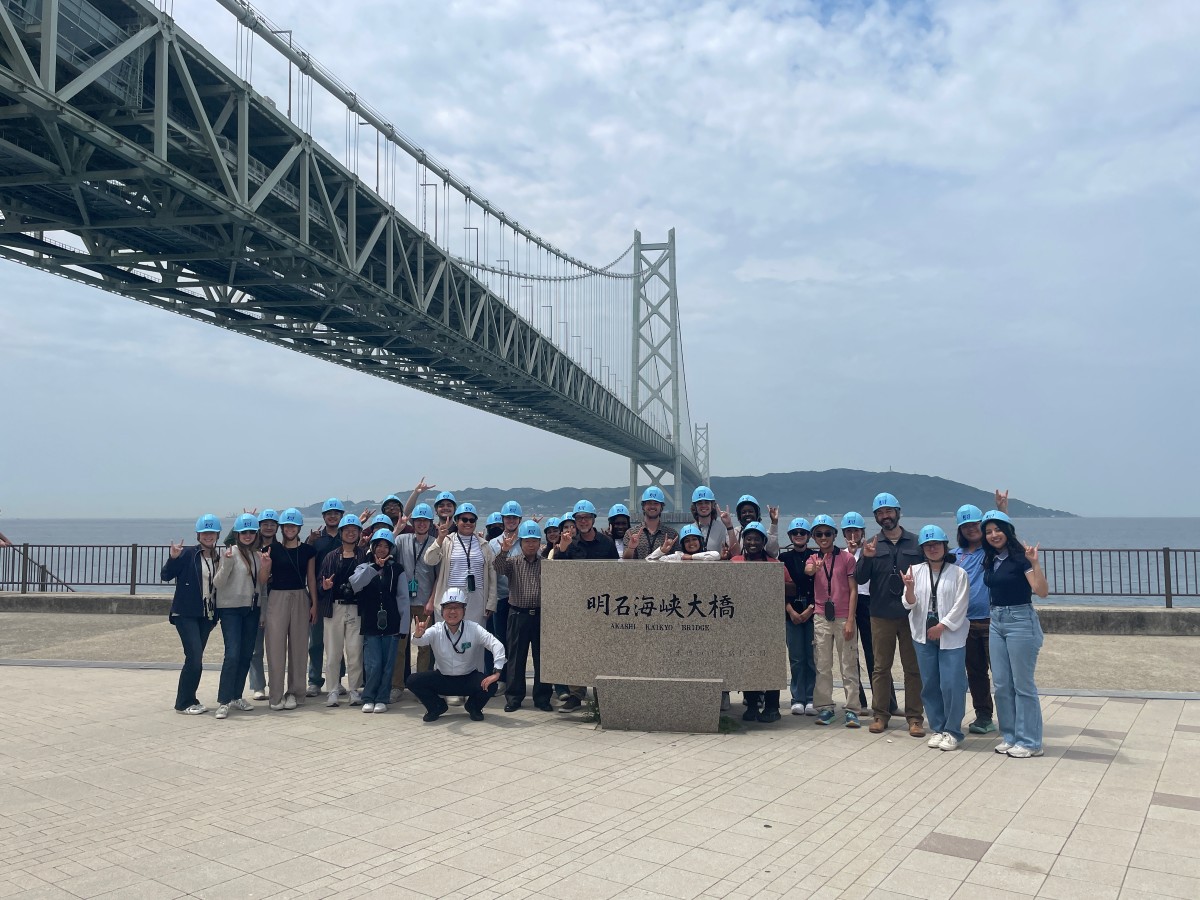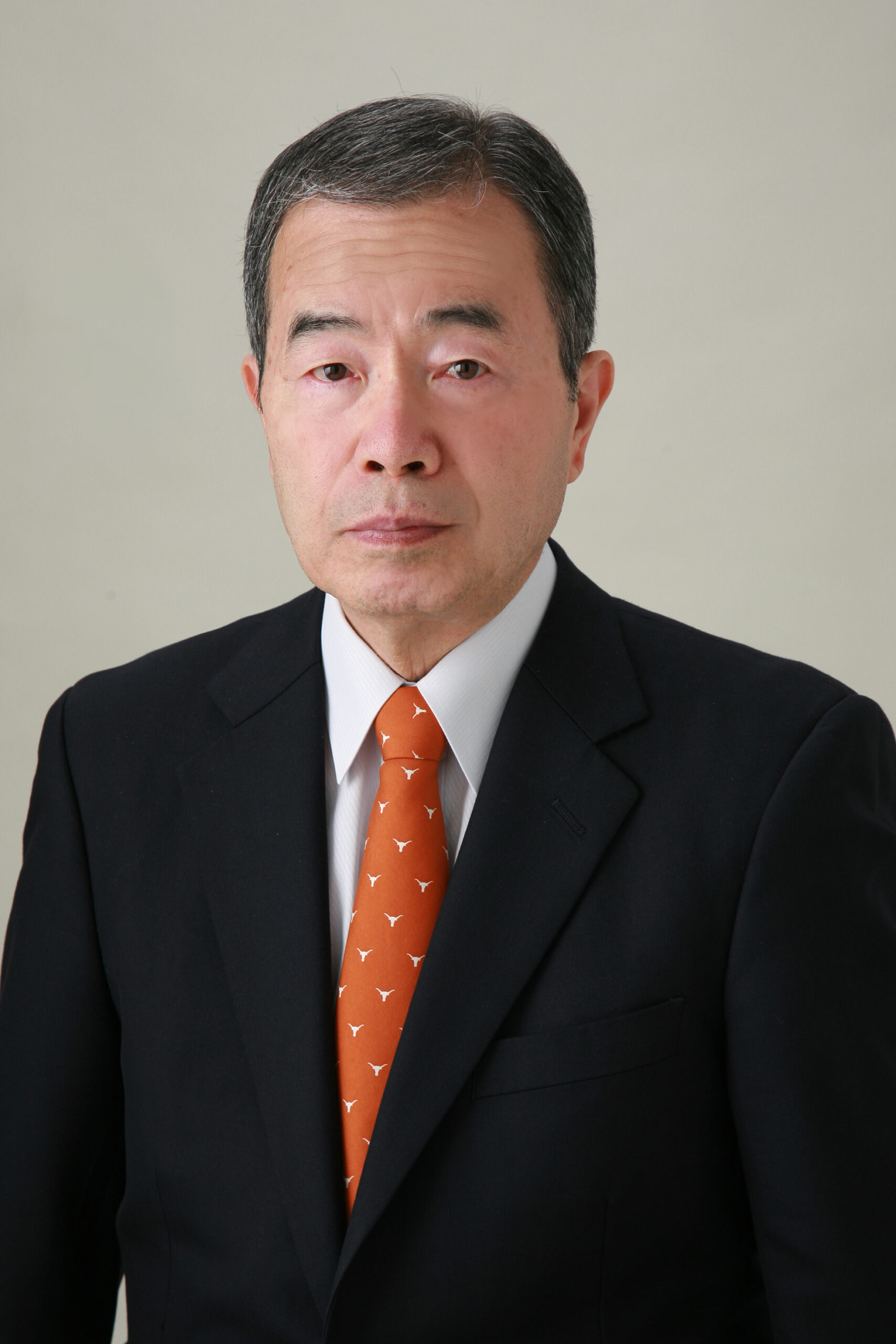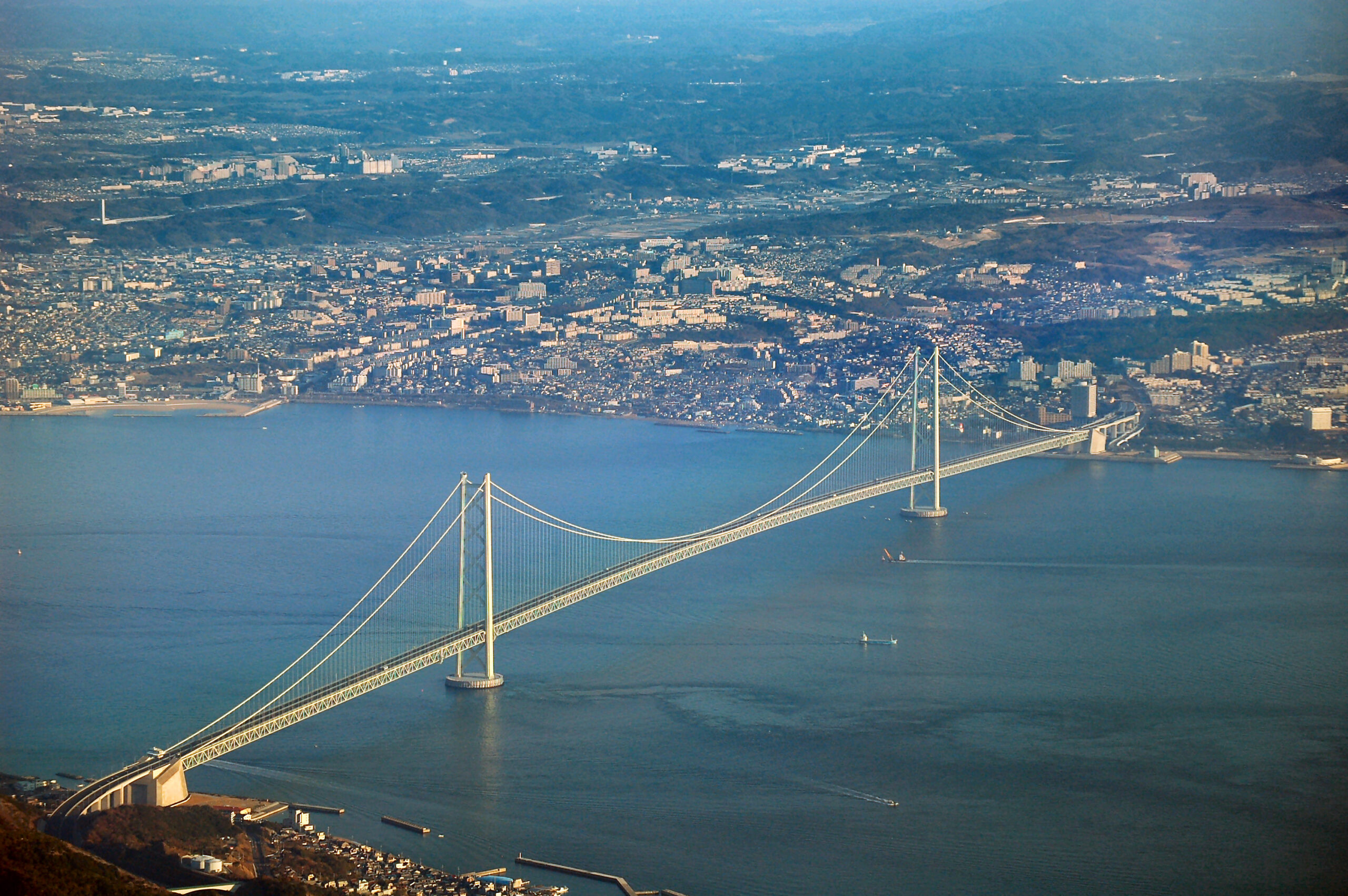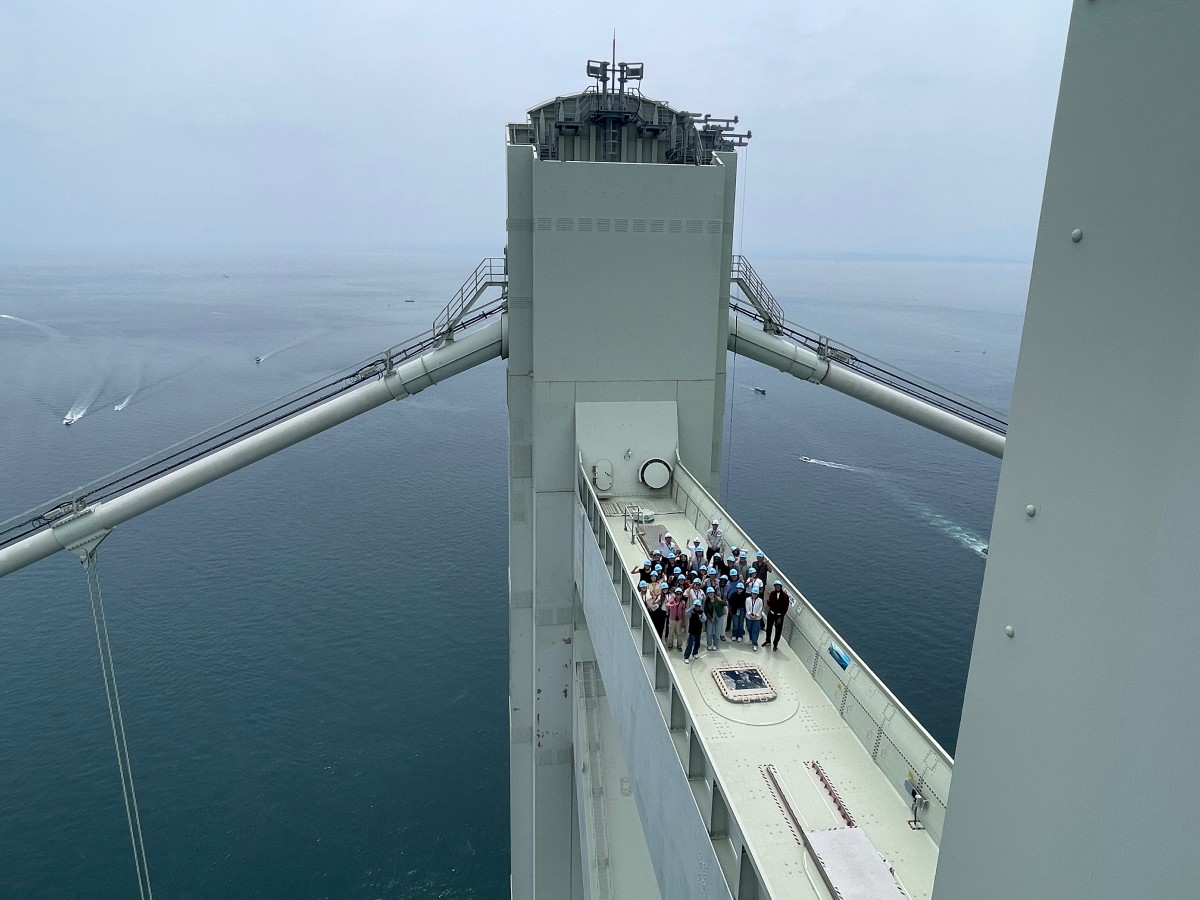Master of Suspension
Texas Engineering alumnus Satoshi Kashima led design of one of the world’s longest suspension bridges.

A cohort of UT students and Professor of Practice Gregory Brooks, tour the Akashi Kaikyo bridge with Satoshi Kashima while in Japan for the Emerging Technologies study abroad program.
When it opened in 1998, the Akashi Kaikyo Bridge in Japan was one for the record books—it was the tallest, longest and most expensive suspension bridge ever, and it was erected under the most severe natural conditions in the world.

Satoshi Kashima
But did you know the mastermind behind this engineering marvel built his academic foundation at The University of Texas at Austin? Satoshi Kashima is a distinguished alumnus of the Cockrell School of Engineering’s Fariborz Maseeh Department of Civil, Architectural and Environmental Engineering, and a legend in the bridge world for his work on the towering structure that remains the second-longest suspension bridge on the planet, stretching more than 2.5 miles across the busy and turbulent Akashi Strait.
“In the 1930s Chujiro Haraguchi, an engineer with Japan’s Ministry of Interior who later became mayor of Kobe, proposed a bridge to link the two islands [of Honshu and Shikoku]. He was inspired by American suspension bridges, such as the Golden Gate Bridge in San Francisco, then under construction. But in those years, Japan’s economy and engineering skills were not up to such a feat,” Kashima wrote with Makoto Kitagawa for a 1997 article in Scientific American.
It wasn’t until the 1970s, once Kashima returned to Japan with a master’s and Ph.D. in civil engineering from UT, that Haraguchi’s vision began to actualize.
Constructing a Career
The Fulbright Scholar left Austin to begin his professional career as a general staff researcher with the Honshu Shikoku Bridge Authority, a Japanese governmental corporation established in 1970 to build and maintain a road and highway system that connected Japan’s main island of Honshu with the island of Shikoku across the Seto Inland Sea.
Kashima jumped on the opportunity to contribute to the project as it hit close to home, literally. The Texas Engineer was born and raised on the country’s smallest island of Shikoku. Although he helped plan and construct the entire system, Kashima is known primarily for his work on the Akashi Kaikyo Bridge, which links the Japanese cities of Kobe and Awaji.
Before the bridge opened, the only way to cross the busy Akashi Strait was via ferry. With upwards of 1,400 ships passing through the area daily, the volume of maritime traffic combined with extreme currents and dense fog made ferry travel inefficient, and most, importantly, unsafe. Following the tragic sinking of the Shiun Maru ferry in 1955, the Japanese government decided it was time for a bridge system, commencing years of planning and feasibility studies. For a young Kashima, the tragedy was a pivotal moment, sparking his personal interest in studying bridge engineering.

The Akashi Kaikyo Bridge from the air.
The early stages of planning were crucial, as Kashima and his team faced a significant challenge: to build a bridge infrastructure that wouldn’t interrupt the high volume of shipping traffic and could withstand the harsh natural conditions prompted by its location in an active earthquake zone. Oh, and one other small thing, it had to span the length of more than 10 Empire State Buildings laid flat. Sounds simple, right?
Shockingly, it wasn’t, but Kashima’s time at UT prepared him for the challenge. During his graduate years, he led modeling tests for the first post-tensioned concrete segmental bridge built in the United States.
Utilizing knowledge from this experience, The Texas Engineer oversaw multiple phases of the groundbreaking bridge’s development in Japan, including experimental research, planning, design, construction and external negotiations. His exemplary leadership and expansive knowledge throughout the project eventually led to his assignment as manager of the construction office and director of the route. After years of research and planning, Kashima and his team of more than 100 engineers and close to 20 contractors began construction in 1988, the next phase of the monumental journey to completing the world’s longest suspension bridge.
Constructing infrastructure suited to survive an 8.5 magnitude earthquake wasn’t easy. In January 1995, months out from the bridge’s completion, a 7.2 magnitude earthquake rocked the Akashi Strait. The natural disaster created a new fault line near the bridge, shifting its foundation and extending its length span by a meter. A new fault line was not on the engineers’ bingo card, but they adapted quickly to minimize further delays in the completion.
“Many people were involved in the construction of the Akashi Kaikyo Bridge in ten years. I was glad that we were able to complete the project with zero casualties,” said Kashima.
In 1998, the bridge began welcoming traffic. With a length span of almost 13,000 feet, it has since remained a marvel of extraordinary engineering.
When asked how he was able to effectively manage a project of such scale, the Longhorn credited his time at Cockrell, working under professor John Breen, where he built and tested a 1/6th-scale model of the JFK Causeway Bridge, which was eventually constructed in Corpus Christi, Texas.
“In order to successfully lead large projects, an engineer is required to have a wide range of engineering knowledge and management abilities. I cultivated those skills during my time at The University of Texas at Austin,” said Kashima.
Following the completion of the Akashi Kaikyo Bridge, Kashima went on to serve as the executive director of the Honshu-Shikoku Bridge Authority and Japan Bridge Engineering Center. He’s also won multiple awards for his transformative work and leadership, including the prestigious Emperor’s Trophy and Japan Society of Civil Engineers award. Kashima’s career is a testament to the leadership and innovation cultivated on the Forty Acres.

Connecting with Cockrell
Even from over 6,000 miles away, Kashima continues to stay connected with his alma mater. This summer, a cohort of UT students, along with Professor of Practice Gregory Brooks, had the pleasure of meeting Kashima for a tour of the Akashi Kaikyo bridge while in Japan for the Emerging Technologies study abroad program.
After a trek along the bridge’s tresses and an ascent of almost 1,000 feet to the top of the bridge tower, the group paused to take in the expansive Akashi waters below. For all, it was an inspiring and, for some, emotional experience.
“The students were in awe. Some even had tears in their eyes as they took in the magnitude of the bridge. It was powerful for these students to see that a former engineering student like themselves had a hand in building something of such scale,” recounts Brooks.
